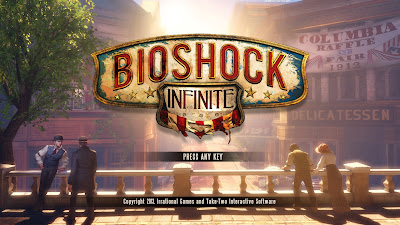Well Torchlight 2 was the spiritual successor to Diablo 2,
now Path of Exile is positioning itself as the homage. Currently the game is in
open beta and is scheduled for a soft release soon. Normally I wouldn’t review
a beta, however the transition from beta to release will little more than a
patch and announcement. Also, Path of Exile is a free-to-play title supported
by micro-transactions and the store is already active and ready for you to
spend your money, so a review seems fair game to me.
So where does Path of Exile’s gameplay sit in the ARPG
marketplace? Well unfortunately it makes
only a few changes distinguish itself, choosing to stick to tried and tested
ideas. The combat is very clunky due to a lack of feedback and further handicapped
by an odd lag spike every now and again. I often had to wonder if I had
genuinely missed an enemy with my swing, or if the game was lagging again.
Spells are also seriously lacking in impact. When I summoned a hail of meteors,
it seemed to barely inconvenience my foes as if it were merely a light rain.
There’s a lack of force and reaction to the damage your character deals.
Another traditional feature is the mana bar. Once again you’re
free to cast your equipped spells as frequently as you want, your only limit
being your mana pool. So once you’ve found your favourite single target and
area of effect skills, you never need to use any other abilities except for a bit
of variety. It really detracts from the action when you can use the same solution
in every scenario. Even boss battles were lacklustre and required no tactics to
beat. It was simply a test of my character’s equipment.
Thankfully mixing things up is a rather interesting change
to potions. Usually you would simply carry giant stacks of health and mana
potions around with you to avoid running out at a key moment. Here, potions
have only five inventory slots and the potions themselves contain a set number
of charges to limit how many uses they have. This makes them a lot more
precious during a boss fight, adding a little tension as you have a very
limited supply. Outside of boss fights, killing enemies restores potion
charges, removing the tedious shopping trips of other titles.
Your character customisation comes from two main areas.
Firstly, the skills you use come from gems found as drops in the world. These
can be put into equipment sockets to activate them on you skill bar. There’s
space on the UI for eight active skills, but you can have more than this inserted
into your equipment as there’s a selection of support gems that can boost
skills they’re attached to. Your skill
gems also have their own independent experience bars, so the skills you keep
socketed in your equipment will become stronger over time as long as you have
the base stats required for their next level.
Secondly, the colossal passive skill tree has numerous paths
to follow. Each path will give a bonus to one of three base three stats and
provided branches into nodes for specific bonuses, such as better spell casting
or weapon specialisations. It’s clearly based on the sphere grid from Final
Fantasy X and the idea is brilliantly implemented into Path of Exile. It suits
the gameplay, allowing you to tailor your character to a play-style you prefer.
Each of the six characters you can
choose from has a different starting position on the skill tree, but there’s
nothing to stop you from expanding into another character’s area.
The developer’s intentions for Path of Exile are quite
clear. Grinding Gear Games have created a dark world, very similar to Diablo 2.
The story follows a similar act
structure and even mimics an event in the second act that plunges the world
into darkness. On their website they state:
“We're sick of the
recent trend towards bright, cartoony RPGs. The art style we chose for Path of
Exile is dark, gritty and realistic. Wraeclast is terrifying, and we've tried
hard to do it justice.”
And the aesthetic they’ve chosen does live up to that
statement. In particular the music does an excellent job of setting the tone of
the game, providing a mix of desperation, loneliness and exploration. Although
it does have to be said that there’s nothing wrong with the artistic choices
made by other titles.
Importantly, the micro-transactions have been carefully designed
to avoid players buying power as a major part of the end-game is designed around
PvP. Currently the shop sells a range visual customisations which don’t impact the
on the gameplay. You can also buy some extra inventory space and character
slots which will be useful for players who get heavily into the game. I found
the default space to be plenty big enough for the two characters I’ve been
playing.
Ultimately, any free-to-play game will be judged on whether
or not it’s worth your time. Path of Exile would benefit from improvements to
the combat and a better overarching story to drive your adventure forwards.
Both of these areas are done better by other games, but since you don’t have to
pay for Path of Exile, it can be a good single player game to dip in and out of
when you have some spare time. Alternatively, if you’re looking for a co-op
game, this is worth checking out as playing as group greatly improves the
experience.






















